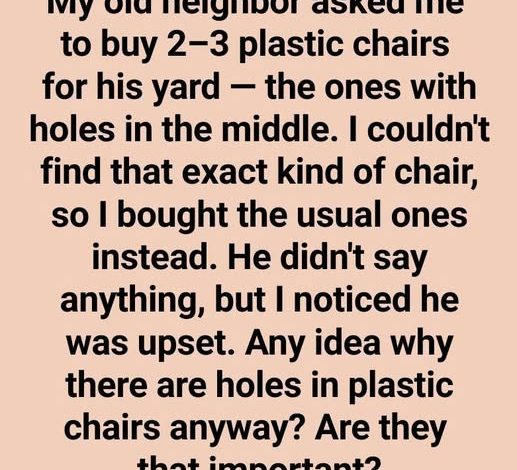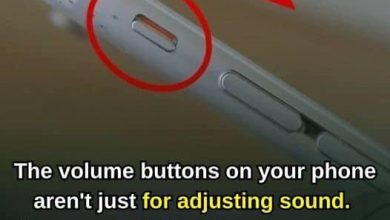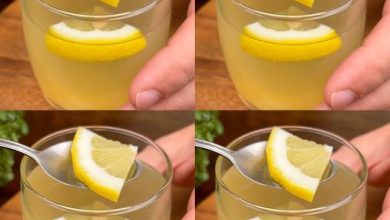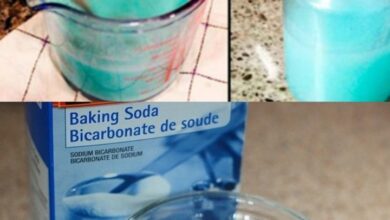The Real Reason Plastic Chairs Have Holes

Have you ever found yourself gazing at a simple plastic chair, perhaps at a lively outdoor barbecue or a casual get-together, and wondered about those seemingly small, unassuming holes dotting its seat and back? It’s a common observation, and for many, these perforations might appear to be just a quirky design choice or a mere afterthought by the manufacturer. However, “the real reasons behind those holes go far beyond aesthetics.” In fact, they’re a brilliant example of thoughtful engineering, serving a multitude of practical purposes that significantly enhance both comfort and durability. Let’s take a deep dive into the fascinating science and smart functionality that explains “why plastic chairs have holes.”
ADVERTISEMENT
Plastic chairs are incredibly popular, found everywhere from sunny patios to bustling event spaces. Their widespread use is no surprise; they’re lightweight, affordable, and impressively durable. But it’s those often-overlooked tiny holes that truly elevate their design and functionality. Here’s why these small features make a surprisingly big difference:
ADVERTISEMENT
The Ingenious Functions of Those Little Holes
1. Optimal Air Circulation for Enhanced Comfort
One of the most immediate benefits of the holes is their role in improving airflow. Imagine sitting on a solid plastic surface for an extended period, especially on a warm day. Heat and moisture can quickly build up, leading to discomfort and an unpleasant sticky feeling. The strategically placed holes allow air to circulate freely, which helps to keep the user cooler and significantly reduces the accumulation of sweat. This is an absolutely “crucial feature for outdoor use during hot summer days,” ensuring a much more pleasant seating experience.
ADVERTISEMENT
2. Efficient Water Drainage for Quick Drying
“Ever left a chair outside during a rainstorm only to find it soaked afterward?” The holes provide an elegant solution to this common problem. They act as efficient drainage points, allowing rainwater to quickly escape the seat. This not only prevents unsightly puddles from forming but also makes cleanup much easier and ensures the chair dries rapidly. By minimizing retained moisture, the holes also play a vital role in “minimizing mildew or mold growth,” extending the chair’s lifespan and keeping it hygienic.
3. Strategic Material Reduction and Cost Savings
Manufacturers are always looking for ways to optimize production, and the holes in plastic chairs are a prime example of clever design that saves resources. By strategically removing small portions of plastic, they can “reduce production costs without sacrificing strength.” This thoughtful reduction in material use not only translates into more affordable chairs for consumers but also results in lighter products that are easier to handle and store.
4. Boosting Durability Through Material Flexibility
It might seem counterintuitive, but those holes actually play a significant role in the chair’s overall durability. During the manufacturing process, plastic undergoes a cooling phase where it naturally contracts. If the chair were a completely solid surface, this contraction could lead to internal stresses, causing warping or even cracking over time. The perforations provide essential “room to expand and contract naturally,” accommodating these material changes and effectively “extending the chair’s lifespan.”
5. Enhanced Comfort Through Pressure Distribution
The design of the holes isn’t just about airflow; it also contributes to a surprising level of comfort. They provide a unique, “cushioning-like support by distributing weight evenly across the seat and backrest.” Instead of your body pressing against a single, unyielding surface, the holes help to minimize concentrated pressure points. This thoughtful distribution makes the chair significantly more “comfortable for extended periods” of sitting.
6. Improved Grip for Easier Handling
For chairs designed to be stacked, the holes serve an additional practical purpose: they “create natural handholds where fingers can easily grasp the edges.” This seemingly small detail dramatically “improves grip when moving or storing them,” significantly reducing the risk of accidental slips or drops, especially when carrying multiple chairs.
7. Featherlight Design for Effortless Portability
“Fewer materials mean less weight.” The presence of these holes directly contributes to making plastic chairs incredibly lighter and much “easier to transport,” whether you’re bringing them inside after a backyard party or setting up for a large outdoor event. This lightweight characteristic is especially beneficial for large-scale purchases, as it translates into “cheaper shipping” costs and simpler logistics for businesses and event organizers.
8. Aesthetic Appeal: Form Meets Function
While the primary motivations behind the holes are rooted in functionality, their visual impact cannot be overlooked. The geometric patterns created by the perforations often lend “a modern, minimalist look to the chairs.” These intentional designs can “transform a simple piece of furniture into something visually appealing,” allowing plastic chairs to blend seamlessly into a wide range of environments, from casual garden settings to more formal event spaces.
Debunking Common Misconceptions
It’s common for people to assume that the holes are there solely for ventilation or simply because manufacturers are cutting corners to save money. And while ventilation is indeed a significant benefit, it’s important to remember that “the holes serve multiple purposes, as outlined above.” They are not a sign of cost-cutting at the expense of quality; rather, “they’re a deliberate design choice that balances form, function, and cost-effectiveness” in a remarkably clever way.
Your Next Outdoor Gathering: A New Appreciation
The next time you settle into a plastic chair, perhaps enjoying a meal al fresco or simply relaxing in the sunshine, take a moment to truly appreciate those humble little holes. What might appear to be a minor detail is, in fact, “a clever engineering solution designed to improve your experience.” From efficiently “draining water to enhancing comfort and durability,” every single hole plays a crucial role in making plastic chairs the incredibly versatile and reliable workhorses that they are today.
So, whether you’re “lounging by the pool, hosting a family gathering, or simply enjoying a quiet afternoon outdoors,” remember that “those perforations aren’t just there for show—they’re working hard to keep you comfortable, dry, and supported.”
Now that you’re armed with the real knowledge of “why plastic chairs have holes,” you can proudly “share this knowledge with friends and family—or impress them with your newfound expertise at your next barbecue!”
Do you think there are other common household items with hidden design secrets we should explore next?




